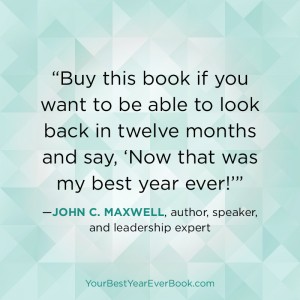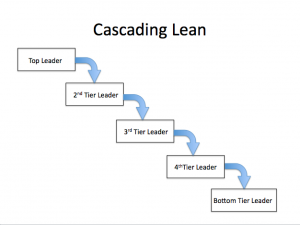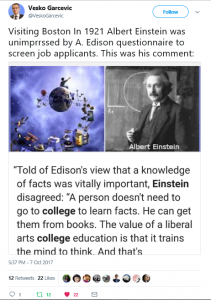 By Peggy Salvatore and Terry McGinn
By Peggy Salvatore and Terry McGinn
When we are out in the field as trainers and consultants, we see different companies but a lot of the same problems. You may have heard the expression, “When you’ve seen one company, you’ve seen one company.” That is partially true. While each company and industry has their own culture and way of doing things, some issues are common across companies, industries and cultures.
One of the most common and preventable problems we see around training is that after training is over and best practices are instilled, personnel eventually either go back to the way they’ve always done it or find a different way around the new process. It’s not evil intent, it’s just human nature. Over time, people find a shortcut, an easier way or just forget the right way. And if things appear to continue to get done, nobody notices. That is, until you have a problem like a bad batch of product or find you are irredeemably over budget.
With a few best practices applied to development of your standard operating procedures and some vigilance, you can avoid these common and sometimes fatal (if you are making pharmaceutical products or building cars, for example) mistakes.
Call in the Experts to Validate Your Standards
When you are talking about the development of your best practices and standard operating procedures, you can’t leave the development of these documents to just anyone. You want to engage subject matter experts to make sure that the best practices and SOPs that you are capturing are, indeed, what needs to be happening for your organization to be
- Compliant with regulatory authorities
- Meeting your corporate targets (think financial goals, think manufacturing yields.)
- Building products according to specifications
- Serving customers quickly, efficiently and courteously, and
- Making sure your standards are met across the organization.
Deviation is Undesirable
Remember high school? The kid who skipped school, cursed in front of your parents and spit on the sidewalk? Deviance. Not acceptable. Outside the bounds of what good looks like. Deviance is undesirable. Same goes for your business.
You establish the way your products need to be built to meet industry regulations, the way you want your customers to be treated so they come back, and the way your billables and receivables need to be handled so you can operate within the law, remain profitable and provide value to society. Somebody has figured all that out in your organization. Those are your experts. They create the standards, write the best practices and standard operating procedures. When everything is new, it is probably done very close to the right way.
Over time, you are likely to encounter “drift”. Drift occurs when new people come in who don’t know why you did it that way. They may not even have access to your SOPs. They may be trained or mentored by somebody who deviates and gets by with it. Or maybe they just forgot the right way to do it.
That is why, when you are bringing new people in to your business, train them right the first time and then continuously qualify them. Make sure your procedures are documented the way you want them, check them with your experts to make sure they are current, and have them in a form so they are usable – that means available, applicable and understandable – so you can get people up to speed.
10 Tips for Designing Your SOPs
We have developed a list to avert the kinds of problems we see every day. While much of our experience is in the pharmaceutical industry, this list can be applied to many businesses because best practices and common standards make any organization run more smoothly. These are issues we see not just in one company or one industry, but have seen in many companies and industries. We interact with trainers from many companies, and this is what they say, too. Here is our list that you can use for your own SOP development. And while you are at it, see if you can add a few ideas of your own:
- Streamline your SOPs. Restructure them to simplify them so you can put your processes to work for you. Make them simple but inclusive enough that you are still meeting standards and regulatory requirements. Eliminate hurdles, extra steps and vague language.
- Better educate your personnel. Don’t just throw any training at them to check the box. Actually train them to know what to do and when to do it by developing effective learning plans built by professional adult educators. And you make it easier on yourself when you hire knowledgeable personnel that can hit the ground running.
- Use your own staff members to write your SOPs and train your staff. Nobody knows your business like the people in it.
- Develop curricula that works. Make sure it is structured to result in the right actions taken at the right time. If it needs a checklist, write one. If it requires a short video demonstration, record one.
- Build train-the-trainer programs for your staff so your experts can be better communicators and mentors. Just a few simple tips can make most employees into effective trainers. Also, remember that not all experts make good trainers, so don’t assume your top performers are the right people to be teaching the rest of your staff.
- Cut “un-need” time down to only what is needed. Your “un-need” times are those unnecessary tasks and busy work that don’t add anything to productivity or the bottom line.
- Keep good talent. Make sure your best people are motivated to stay and perform for you. Some people really are irreplaceable.
- Build a future of qualified personnel. Figure out who your future experts are and invest in them.
- Reduce CAPA (corrective and preventative action) and rework by building a culture of doing it right the first time. Also, teach people how to investigate issues and problems for corrective action. Always follow the SOP no matter what else is going on. Occasionally re-familiarize personnel with it because the longer they do a task, the more shortcuts and “drift” occur in work. Train on a continuous basis with qualified people and maintain qualifications to make sure they are doing it the right way.
- Ensure your training remains current. That refers not only to content but also to style. Your learners are changing and your old training might be correct but ineffective. Update it.
Bonus Item: Train people to begin work right away. When you hire competent people who are ready to do the job, they will want to get up the learning curve quickly and begin to produce, so make sure you give them the knowledge and tools to produce quality work right out of the gate and provide the ongoing training and oversight to maintain the quality of their work.
What is on your wish list for creating SOPs and best practices for your organization? We can help you hire competent personnel, build training that works and streamline your processes so you are doing only what you need. Contact us at workingwithsmes@gmail.com.
Photo by Peter Clarkson on Unsplash









